Animals are one of the most adored creations on the Earth, adored by everybody yet despised by the few. Who doesn’t want to have a pet animal? Cats, Dogs, Birds, Tigers, Snakes, you name it, mankind have tamed many of mother nature’s beautiful occurrences for their own enjoyment.
But what if you wake up in the middle of the night to find your sweet little puppy participating in a satanic ritual with the other canines in the neighborhood? What if the snakes we discussed were ancient serpent demons that ascended to dominate the world? Animals have been featured in horror films in a variety of ways, and today we’ll look at some of the most well-known.
Anaconda (1997)
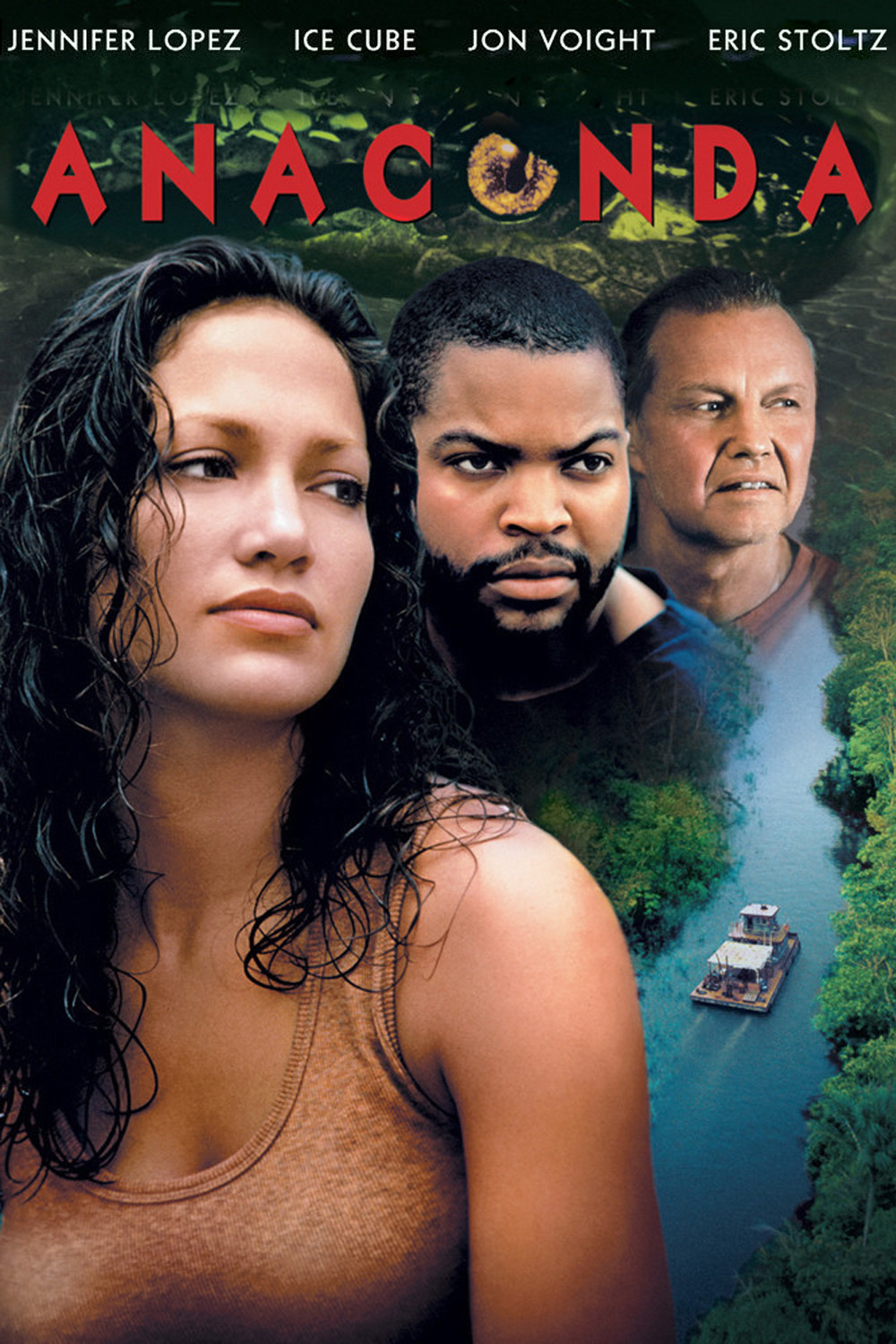
The film Anaconda begins with an intriguing fact: “Anacondas are a one-of-a-kind snake. After eating their prey, they defecate in order to devour it again.”
The absolute fear that one feels simply reading just one statement is enough to convey the magnitude of this film’s effect. I doubt there are many people who have not watched Anaconda, but it is a film that should not be overlooked.
The Amazon jungle is home to notorious 40-foot anacondas, cruel monsters known to vomit their prey in order to hunt again. In the Ariau Jungle hotel in Brazil, Terri Flores (Jennifer Lopez) reunites with expert Dr. Steven Cale (Eric Stoltz) to produce a documentary on the “People of the Mist,” an unknown Indian group.
On a boat commanded by the tough explorer Mateo, they’re accompanied by narrator Warren Westridge (Jonathan Hyde), production managers Denise (Kari Wuhrer) and Gary (Owen Wilson), and cameraman Danny Rich (Ice Cube) (Vincent Castellanos).
They stumble upon the wincing poacher Paul Serone not long into their voyage down the river (Jon Voight). Serone quickly reveals after leading the crew to a hospital after a toxic wasp strikes Cale, or foraging for fuel as they float past a destroyed boat, that the group is not priorities for him. His mission is to capture an anaconda that is undoubtedly the largest in the world alive. It’s a risky mission, and the rookie filmmakers aren’t keen on assisting him, so they’re imprisoned.
“Anaconda” is another one of those terrifying, terrifying, and horrific horror films that manage to live up to the hype. The dialogue is engrossing, filled with intellect or wit. It also makes the public invested in the visual effects, which are equally as unique for its time. The computer-generated sequences are a sight to see, and the slimy, mechanical snakes instill terror and fear easily.
Despite the fact that the bulk of the sequels were direct-to-DVD or made-for-TV releases, this blockbuster picture became a profitable franchise, spawning three sequels.
Black Sheep (2006)
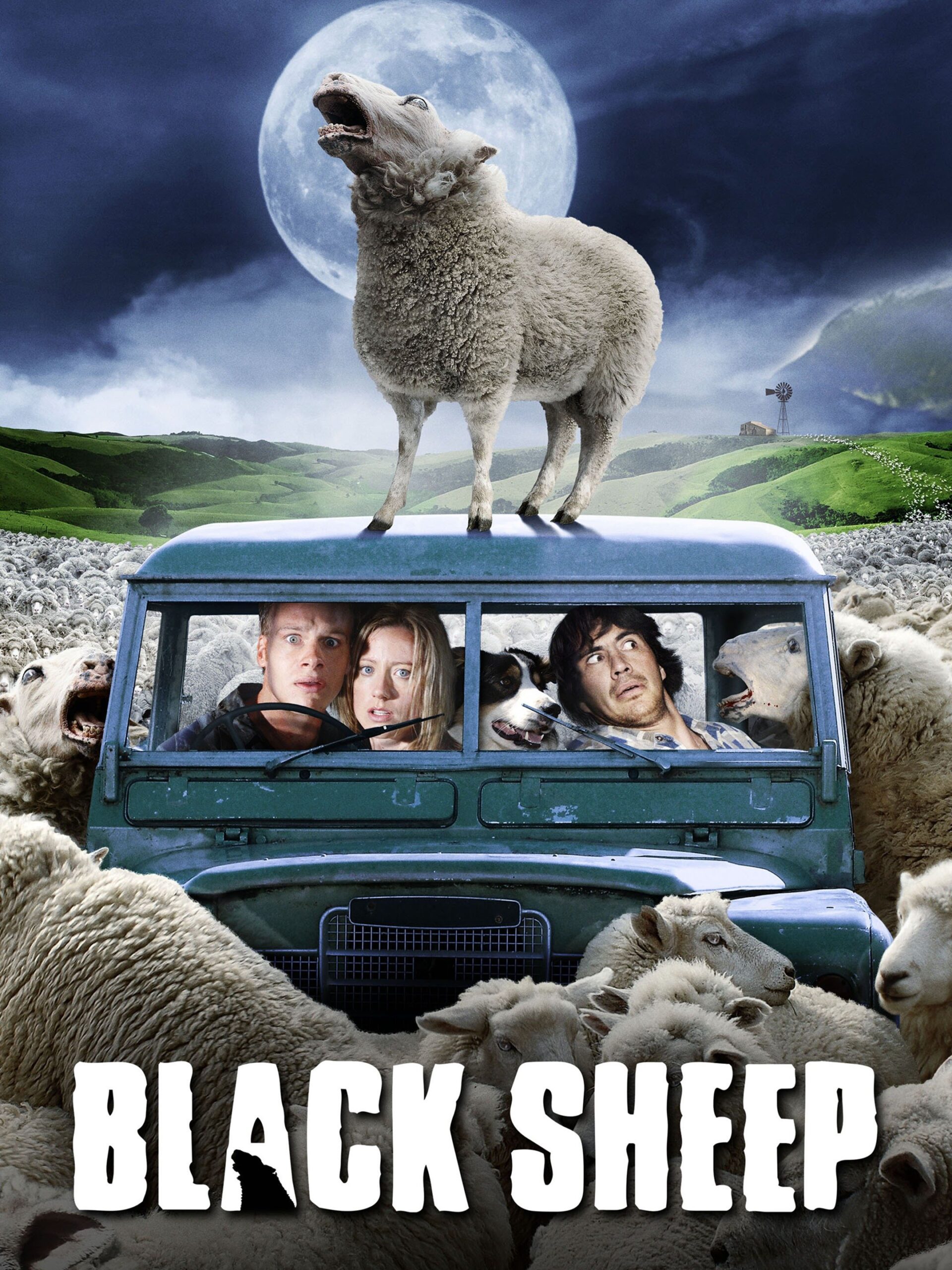
Black Sheep is a film that revels in gore and blood. Take the world’s least violent beasts then experiment with genetic anomalies to improve cattle, and voila! Sheep with homicidal tendencies! Jonathan King is the director of this New Zealand-funded film.
Henry and Angus Oldfield grew up on a massive sheep farm in New Zealand. Henry (Meister) has a lot of promise as a future farmer, but when his outraged elder brother terrorizes him by slaughtering a sheep and donning its gory fleece, Henry gets aviophobia or fear of sheep.
That terror, I believe, was created by them. I seriously doubt that there are enough people in the world who have a hatred of sheep to warrant a diagnosis, but this picture establishes the psychoses. Henry’s delicate mind is further shattered when their father dies in a horrific accident shortly after this bloody hazing.
Angus has employed a mad scientist (Wright) who has invented a mutated strain of sheep, and they are discarding of some of the unborn sheep (now in jars of formaldehyde), and Grant brazenly steals one of the vials and escapes into the woods, with a few of the mad scientist’s henchmen close on his tail. Grant stumbles and breaks the jar, landing on the lamb fetus, which appears to be alive.
This movie was a lot of fun to see. The figures are rather loosely sketched, and it has a similar feel to “Shaun of the Dead.” This film doesn’t quite reach Shaun’s heights of hilarity, but there are some real laugh-out-loud moments. Some of the chuckles come from the over-the-top gore and the inconsistency of flesh-eating sheep, while others come from the circumstances. Black Sheep is precisely what it claims to be: a low-budget horror thriller with equal parts gore, comedy, and horror.
The visual effects are excellent, mainly due to the fact that they had been created by Weta Workshop (the team that went on to work with Jackson on his blockbuster releases, and many other impressive titles including Avatar). The plot is arguably the most comedic component in some respects, which is aided by the fact that the marketing was quite clear that it would be a ‘killer sheep movie.’
When you add the fact that the story is very unique, the upshot is that it’s rapidly evident what will happen, and all you have to do now is wait. What happens to Angus in the conclusion must be seen… or unseen… to be comprehended.
Jaws (1975)
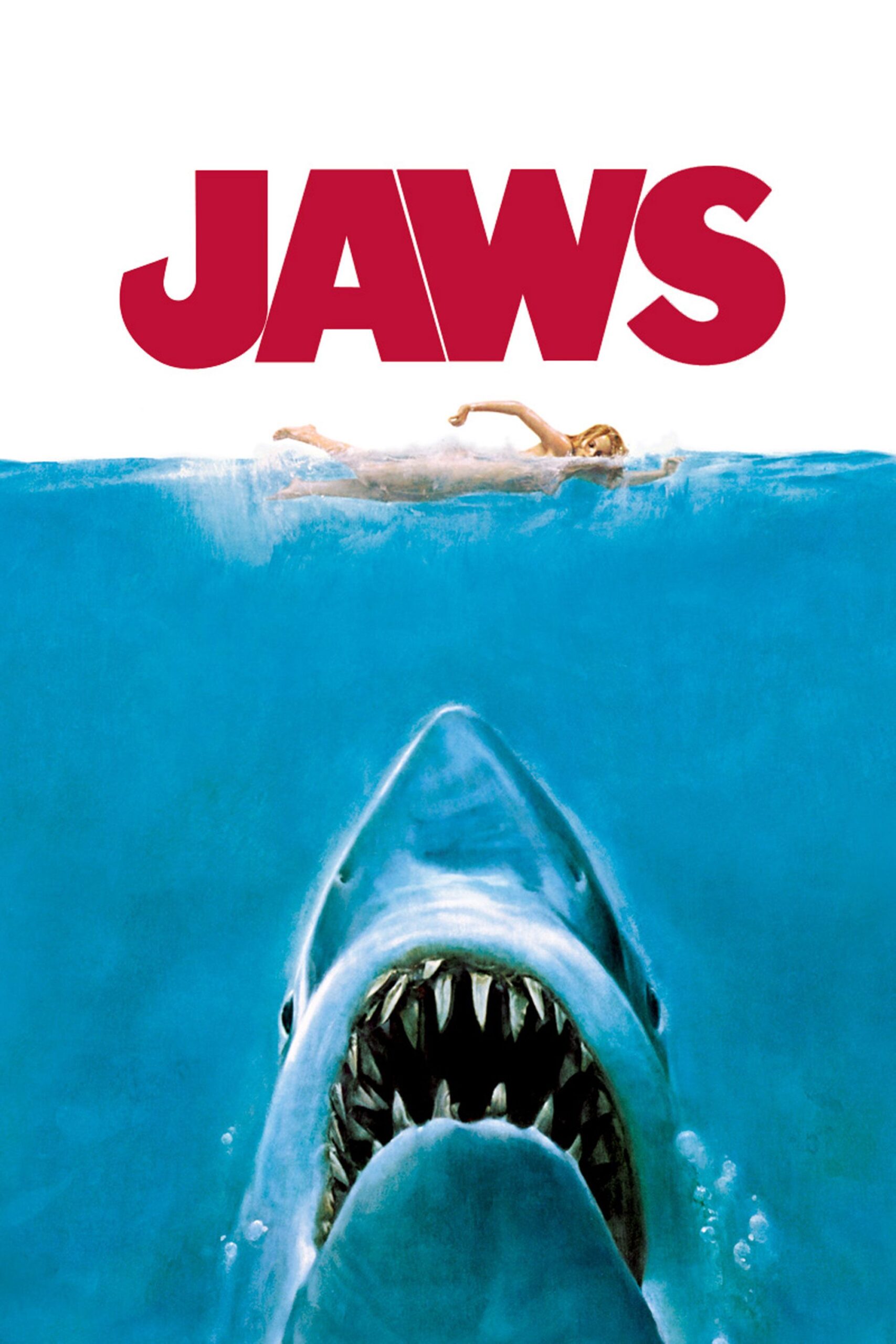
Steven Spielberg’s “Jaws” is a wonderfully successful action picture, a horrifying thriller made all the more terrifying by the fact that it’s populated with characters we get to know and care about. It’s a film that’s as terrifying as “The Exorcist,” but it’s a sweeter kind of terror, so much more enjoyable since we’re being terrorized by an outdoor-adventure saga rather than an ordinary demon.
The narrative covers a great white shark’s attacks on swimmers, the endangered resort island’s response to the loss of tourism revenue, and three men’s epic quest to find and kill the shark. There are likely to be several layers of significance in such a famous narrative, but Spielberg wisely decides not to accentuate any of them.
This is an action thriller that is content to keep totally inside the confines of its plot, and none of the characters are required to sit through speeches explaining the meaning of everything. Spielberg, adding to it, excels at presenting those characters in a way that distinguishes them.
There are two adversaries in Jaws. In the first half of the film, the shark isn’t the enemy; instead, it’s the face of bureaucracy, as portrayed by the mayor. Jaws represent the rarest of cinematic monsters – something that exists in the depths of the water – in the second part of the picture, which is classic man versus beast.
Richard Dreyfuss as the oceanographer is undoubtedly the most brilliant casting decision in the movie. In this film, he appears to be youthful, beautiful, and scholarly, and he presents technical knowledge about sharks in a way that underlines our fundamental fear of them. And that gets us to the shark.
The film includes some footage of a real great white shark. The rest of the time, a mechanical shark modeled after the genuine one is used. The deception is now complete. We get a close look at the shark and stare into its unwavering eye, and it just seems like a shark.
Jaws were such a hit that it inspired three lackluster sequels. Despite countless tries, no film has ever been able to match Jaws in terms of tension. And, as the years have gone, it appears less probable that something will come anywhere close.
Lake Placid (1999)
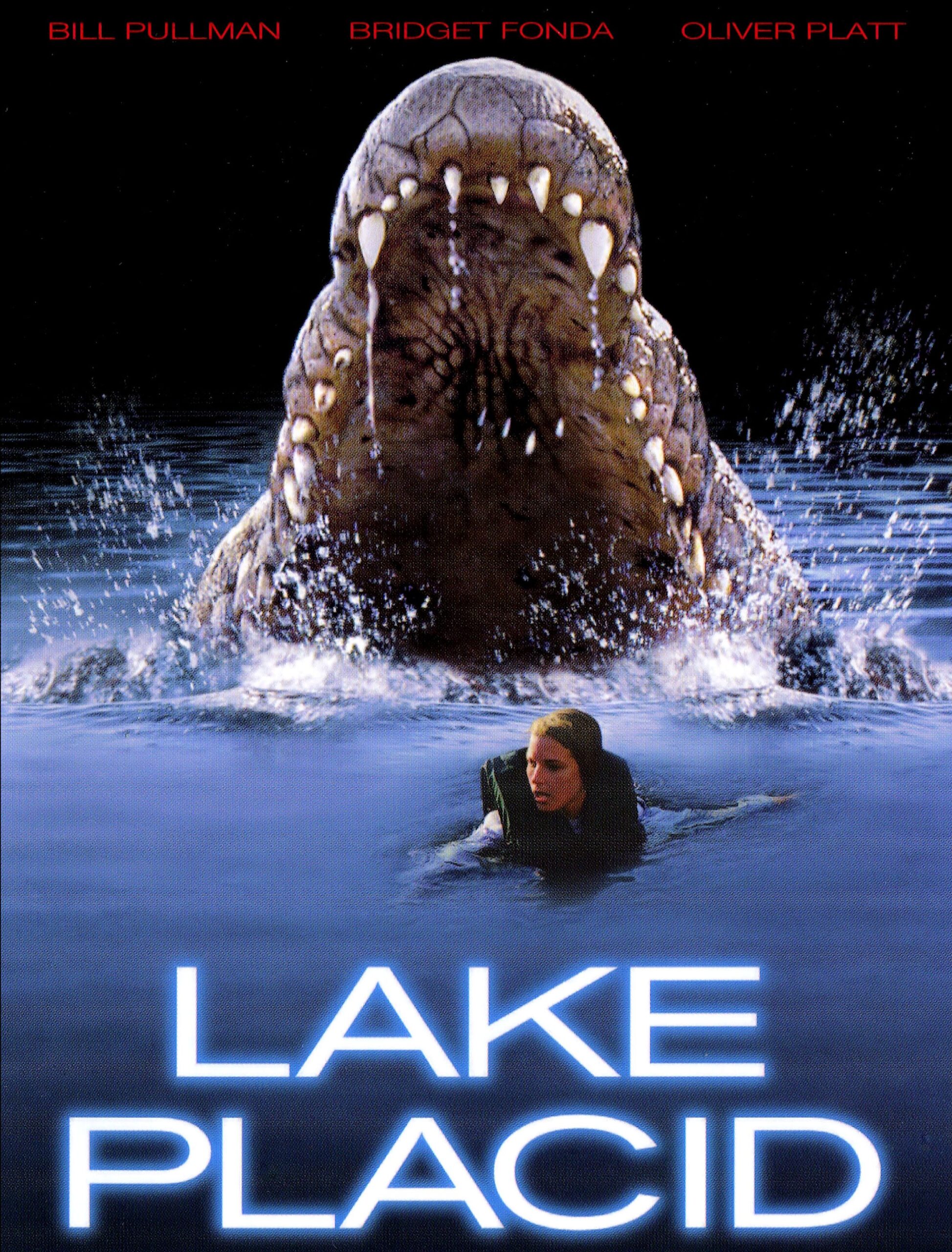
“Unless it damages man, what an animal does in the water is his own business.” One of the characters in “Lake Placid,” Sheriff Keough, says as much. He is entirely wrong in my opinion. Until scuba-divers enter his territory, the 30-foot crocodile in this film stays in the water, calmly feeding on bears and calves. It is all their fault that the beast becomes enraged and begins to consume humans.
A fanged lake monster rips off the bottom half of a diver’s corpse in Aroostook County, Maine, as it should in any excellent killer animal film. The local fish and game department’s Officer Jack Wells (Bill Pullman) believes it’s a bear; all Sheriff Hank Keough (Brendan Gleeson) knows is that he’s lost a good friend.
New York paleontologist Kelly Scott (Bridget Fonda) travels to the remote backwater marshland of New England to work as an assistant. At the same period, Hector Cyr, a wealthy, quirky mythology professor, and crocodile connoisseur arrives in a private chopper to assist in the search for what he believes is a gigantic crocodile.
Deputy Sharon Gare, one of the few characters who seem real as a supporting character dealing with the harsh situation, also joins them. The body count grows as the squad explores the murky waters for indications of the thing, and when the 30-foot crocodile eventually reveals itself by hauling a furious bear into the lake, the group makes solid plans to take down the unfathomable monster.
Everyone is oddly created to be the ideal match for a man-eating reptile flick, and they’re all eccentric, witty, cynical, and one-of-a-kind. “Lake Placid” makes no attempt to disguise its hilarity, the major theme’s ridiculousness, or the characters’ humorous reactions to disaster.
It’s a mixture of terror and comedy. Stan Winston’s animal concepts are always interesting in terms of visual effects, and “Lake Placid’s” the scaly enemy is no exception. The computer images are good since they’re employed selectively, but it’s the massive animatronic beast that really stands out.
The slimy, rubbery puppet, which looks like a combination between both the shark from “Jaws” and the T-Rex from “Jurassic Park,” has some really fun moments, the best of which includes an undersea onslaught on Fonda and an airborne assault on the helicopter. The finale is amazing too, however, the only downside is that the film moves a little too quickly, with a significantly short duration.
The Grizzly (1996)
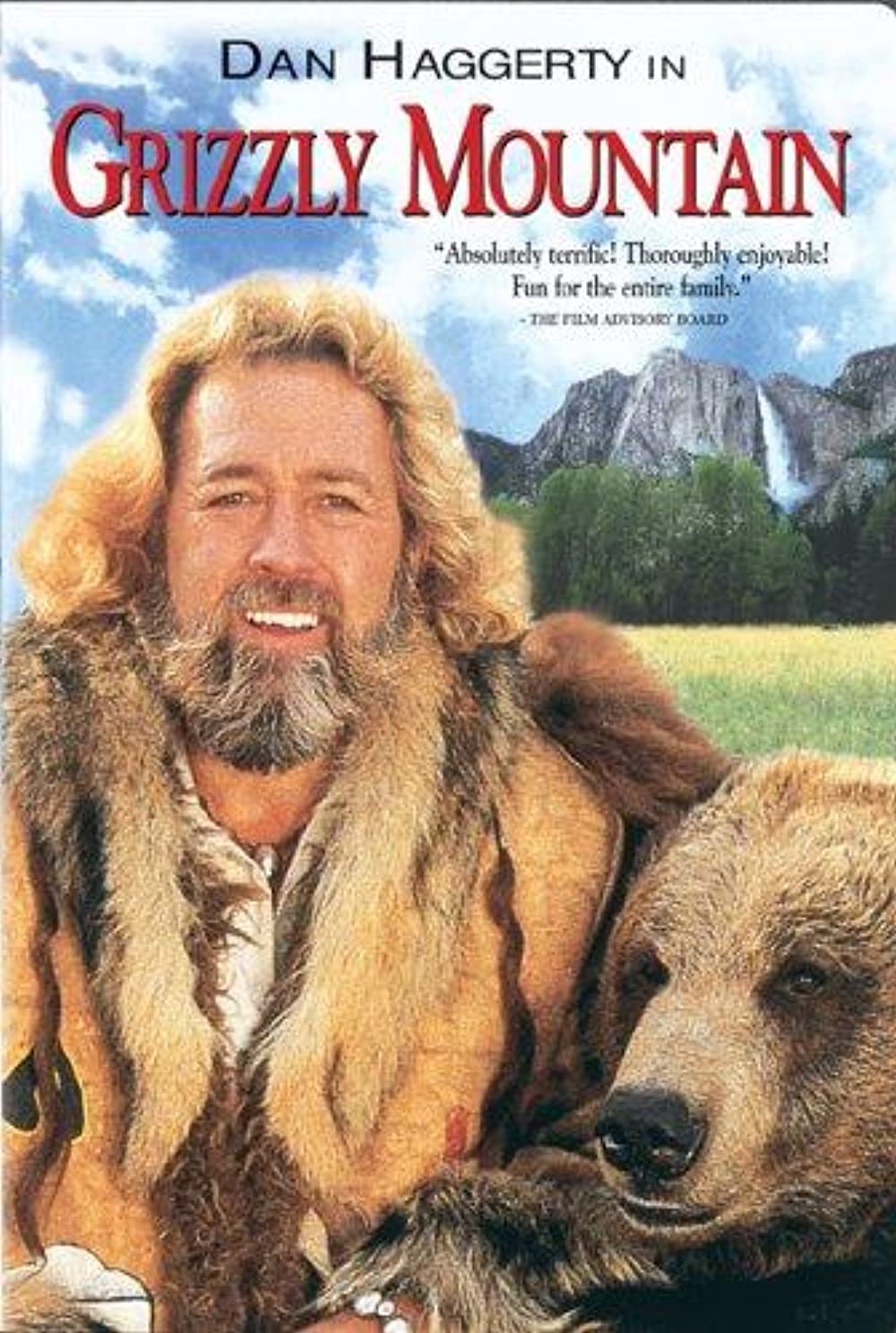
In 1975, Jaws was released into the globe. It went on to become a box office smash, ushering in a new era of fear as well as a new generation of filmmakers. Organic horror films were soon being produced out left and right as indie filmmakers tried to emulate Jaws’ box office performance. One such endeavor was Grizzly.
At a national park, disfigured campers were discovered. The bear population is being investigated. Forest ranger Michael Kelly (Christopher George) sets out to stop the devouring slaughter with the help of pilot Don Stober (Andrew Prine) and biologist Dr. Arthur Scott (Richard Jaeckel). The assailant, however, turns out to be far bigger and deadlier than predicted.
Spielberg is always able to make the most of a known narrative by incorporating elements that made the storyline work: authentic people, tension buildup and maintenance, an awesome-looking monster, and so on.
These features are easily found in Grizzly. The characters are entertaining to watch, and they deliver much more than what the script asks of them.In these forests, there isn’t much in the way of suspense. While Grizzly does throw a twist on a cliché here and there, we can confidently predict every character’s demise.
By far the most aggravating feature about Grizzly is the bear. It may also be endearing rather than intimidating at times. When you see him sitting on his hind legs and roaring, you want to pet him instead of fleeing in horror. The bear’s legacy is made exciting by the fact that he is supposed to be a million-year-old living fossil, raising thoughts of a terrifying-looking mythological beast.
Grizzly is a lot of fun to watch, despite its typical premise, and is perfect for a lazy Sunday afternoon. The method used to kill the grizzly bear may provide some enjoyment to viewers. And, happily, it includes a fair amount of brutality.
All of the aspects of the movie mesh together decently, and they are worth seeing at least once. It won’t be able to take the position of Jaws as your favorite natural horror film, but this deserves an honorable mention.
Crawl (2019)

When Paramount decided not to release the horror film Crawl, directed by Sam Raimi, the critical world felt it would be another summer disaster, as had been predicted. As a result, I can declare with real surprise and delight that Crawl is far from the disaster one might expect. While it’s not exactly perfect, it’s a LOT more successful than most of the season’s more anticipated releases.
As a hurricane approaches, a young woman is confined in her home with an alligator. They’re up against Haley (Kaya Scodelario), a diver on a dangerous journey to find her father (Barry Pepper). In the crawlspace beneath their old family home, she discovers him injured.
He’s been assaulted by an alligator, and the two are now compelled into a struggle to escape with only a few minor injuries. However, as the film progresses, this deceptively basic idea becomes increasingly powerful. Crawl goes one step further than other entries in this genre, focusing on a single, devilishly driven creature.
Not only are there more than one alligator in the neighborhood, but there seems to be an unlimited supply of them, and they all seem to appear out of nowhere like the world’s most dangerous game of whack-a-mole. It maintains the intensity very well, especially when you know that every time Haley and her father dodge a gator, several more are just around the bend. It’s a massive chewing cycle with no end in sight.
Michael and Shawn Rasmussen’s self-important script contains the talking point. Crawl is full-on melodrama, which is a fantastic contradiction to discover in this genre. While there is a necessity to incorporate just enough story to make the audience care about the characters’ survival, Crawl is also a full-on melodrama.
Scodelario also, demonstrates that she is an excellent fit for the genre. Haley and Dave devote what could be their final hours on Earth in a prolonged therapy session, working through their post-divorce family issues. It’s an eye-opening diversion from the reptilian killing spree we’re supposed to be seeing. There’s also a cute puppy named Sugar in the equation, just in case the movie wasn’t emotional enough.
Crawl is a plain, ugly, and entirely naïve B-movie that ranks among the best horror films of the year. I would recommend running rather than crawling to view it, or a moderate walk should do.
Cujo (1983)
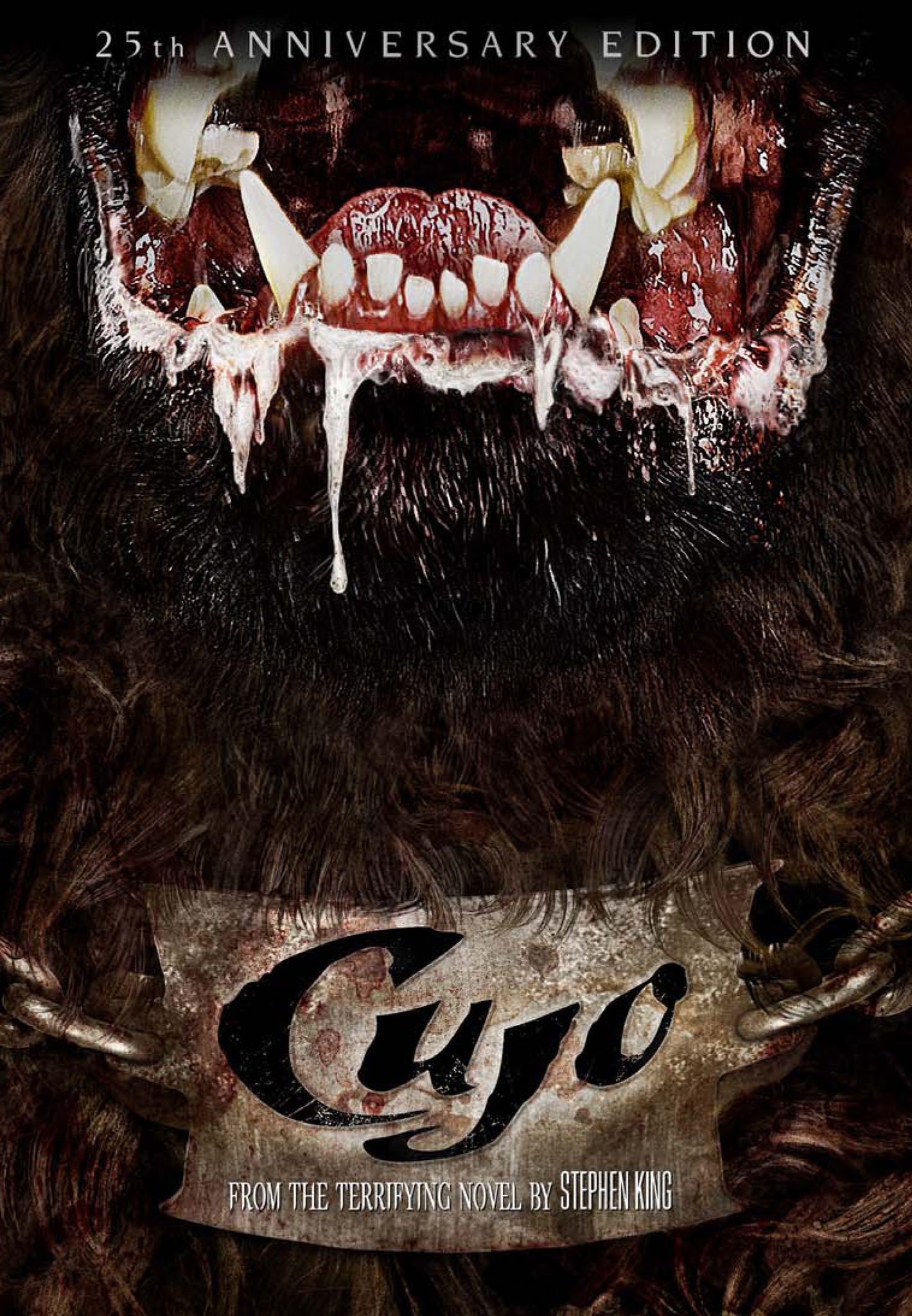
How did a Hollywood movie about a huge, shaggy, dangerous dog and two humans trapped in a car become a key barometer of contemporary pop culture?
Cujo is a strange addition to Stephen King’s series. Despite the fact that the title has resonated with people since the film’s premiere in 1983, it remains an unlikely contender: A mother and her child are trapped in a car by a vicious dog.
Cujo, the adorable Saint Bernard, is seen chasing a bunny into its hole. Cujo is bitten on the nose by large brown bats. What will happen to anyone in his vicinity in the meanwhile is depressingly evident. However, it’s engaging to see how the picture can retain a sense of suspense with a linear plot like this.
The parents divorced due to a sequence of events, and the mother and son traveled to an auto repair shop in a remote place. Cujo is the only living thing in the region, and no one else is expected for a long time, unbeknownst to them.
Mother and son are confined in their stalled vehicle for a long time, under the watchful eye of what has now turned into one utterly disturbing dog. Under all that dirt and cosmetics, it’s possible to make out the shapes of a normal St. Bernard, but the dog’s image becomes quite terrifying.
Miss Wallace’s acting is very impressive and effective. As the scared youngster, Danny Pintauro is fantastic. “Cujo” features many subplots that evenly divide screen time (despite the film’s relatively short 90-minute runtime), all of which perfectly capture the horror components of mistreated creatures’ retribution or the concept of nature gone awry.
The film closely follows the book, albeit the ending is slightly altered for commercial reasons, and the underlying themes of unconnected stories, life’s uncertainty, and random answers not linked to conscious action are clearly translated to the big screen. Be warned: if you get too engrossed in “Cujo,” you could have trouble looking your own dog in the eyes.
Pet Sematary (1989)
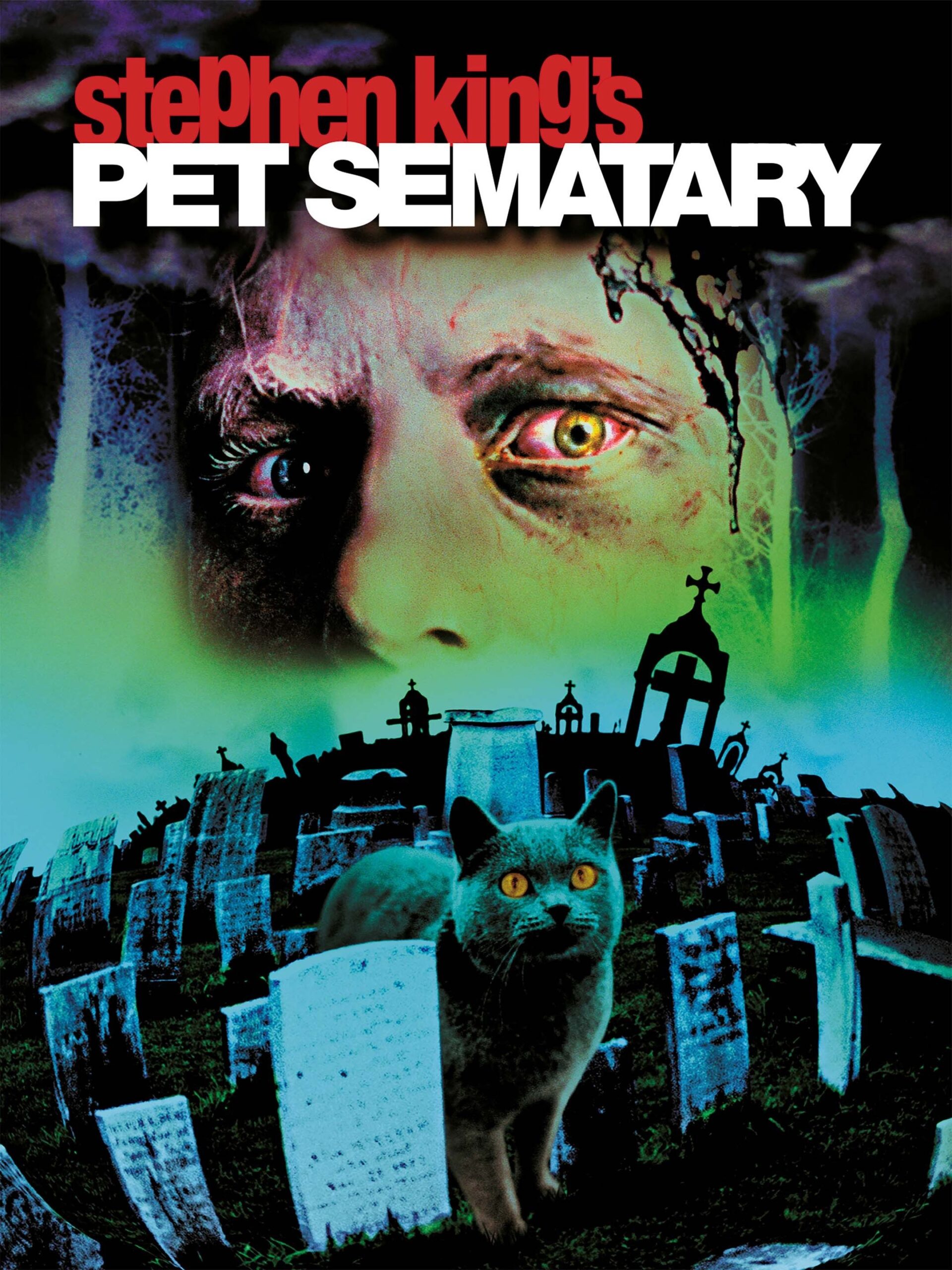
The location for Stephen King’s “Pet Sematary” is a meadow in the woods outside the little Maine town of Ludlow, where generations of children have buried their dogs, cats, and even fish. The name of the film comes from a plaque drawn by a youngster above the entrance to the pet cemetery.
It’s chock-full of imaginative depictions, like an angry zombie male cat who stalks the household where he was once a living pet. He growls at everyone and stinks like a demon. The plot revolves around a beloved 3-year-old boy who, after being revived, transforms into a pint-sized monster with a Donald Duck-like voice.
Many people feel that Pet Sematary is one of the unappreciated horror masterpieces from the 1980s. After all, many spectators had grown bored of horror films by 1989 owing to an oversupply of remakes or rip-offs of the same basic formulas.
However, Pet Sematary is an outstanding film. The first half of the film does an excellent job of creating the tone and establishing the terrors that will follow. And when the terrors finally arrive, there are some truly terrifying horrors in the mix. When Elliot Goldenthal’s wonderful, pitch-perfect musical notes are added, the result is frequently something surreal.
The film works largely because the majority of the objectives are carried out by the audience. Dramatic music and visual effects help to express and enhance what the story is trying to say. To be honest, you’re probably more interested in seeing what else this new release has to offer, considering that the picture has been around for 30 years.
The plot is almost digestible in the book, which has 300 pages of motive. In the film, however, this is impossible, and you must wait through scene after scene of intensity, which is an enjoyable ride. Pet Sematary aspires to be more than just another zombie movie, and it ultimately comes across as just that and provides a faithful adaptation of its novel.
The Birds (1963)
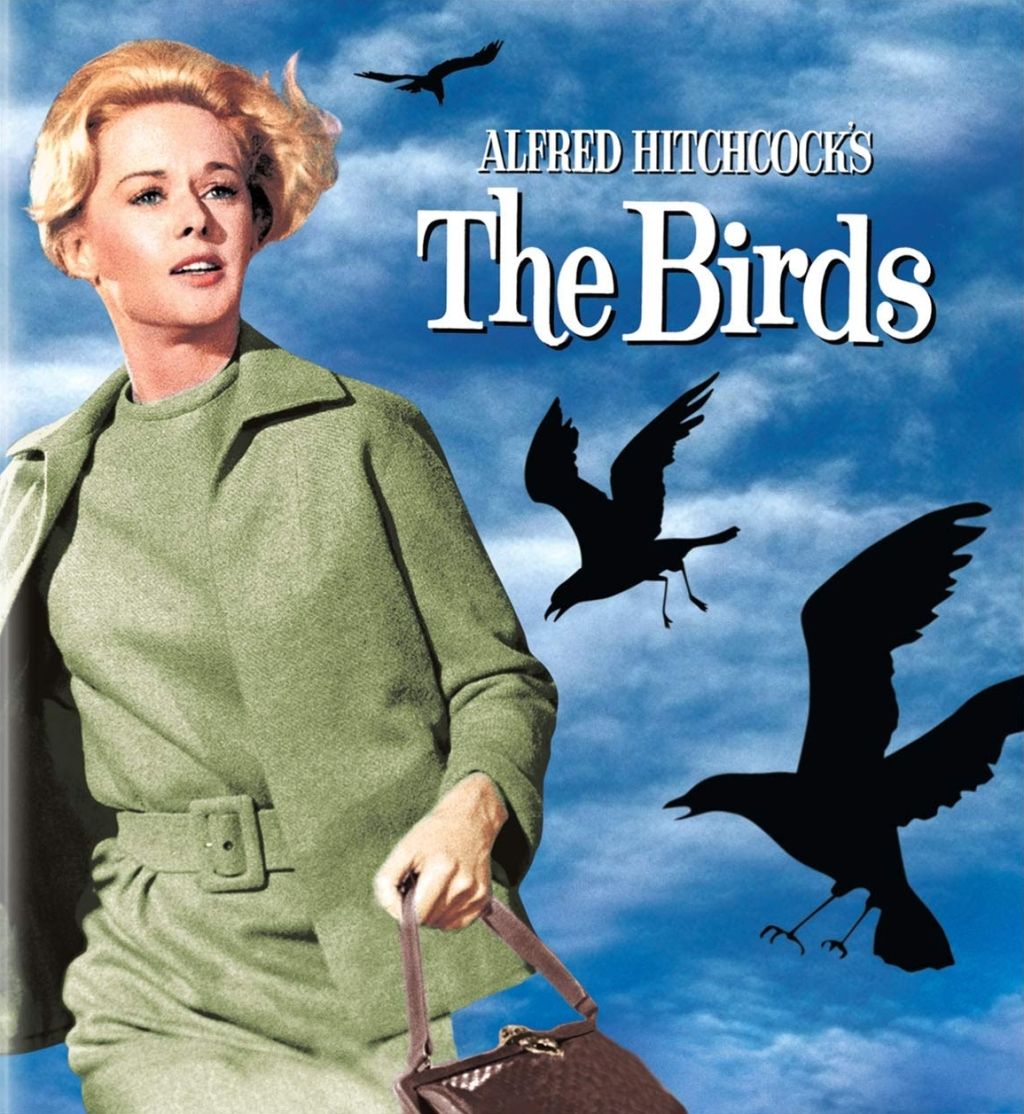
Typically, critter-attack horror films include monsters that are already dangerous (sharks, snakes, velociraptors) or have become enormous and nasty as a consequence of radiation, pollution, genetic alteration, witchcraft, or mutation (giant mutant killer ants, giant mutant killer bunnies etc). Pseudo-scientific justifications are commonplace. Hitchcock and screenwriter Evan Hunter came up with a fabulously unique concept: a 1940s screwball comedy-romance placed over an unfathomable horror story.
The place and characters are detailed in great detail. The Birds could easily be a rom-com drama up to the midway mark. When birds of various types — chiefly crows and seagulls, it appears — attack the town’s occupants in numbers, the metamorphosis happens. In the end, the birds defeat the humans, and Hitchcock’s final shot (which exhibitors are likely to compress) depicts the birds in possession.
The Birds is often considered as Hitchcock’s final masterpiece (it was shot in 1963, at the height of his reputation). Could it also be regarded as Hitchcock’s definitive picture, the purest and most confident depiction of the concerns that had motivated him? Its ambition, bravado, and mastery of the content is something to behold.
Hitchcock’s ability to combine screaming B-movie histrionics with cold film genre elegance is commendable. His camerawork’s formal accuracy, Evan Hunter’s clever efficiency of language, and a sense of location so precise and confident that make you feel like you’ve been there.
The Birds are literally free to fly in this film. There is no engine moving it, no music anchoring it, and nothing to hold it afloat except from that updraft of sensory ambiance and existential dread. Hitchcock is claimed to have spent a lot of time thinking about how to conclude the picture.
He finally scrapped the scripted ending scene in favor of a non-resolution, open ending – the perfect closing picture that keeps the planet in limbo and all of its secrets undisturbed.There are hints to ornithological, historical, and psychological theories.
We’re left with the birds, in the end, observing as the people abandon the house to them. As the sun rises, final anticipation is shattered: the words “The End” are missing from the screen. A must-watch movie if I’ve ever recommended one.
Orca (1977)
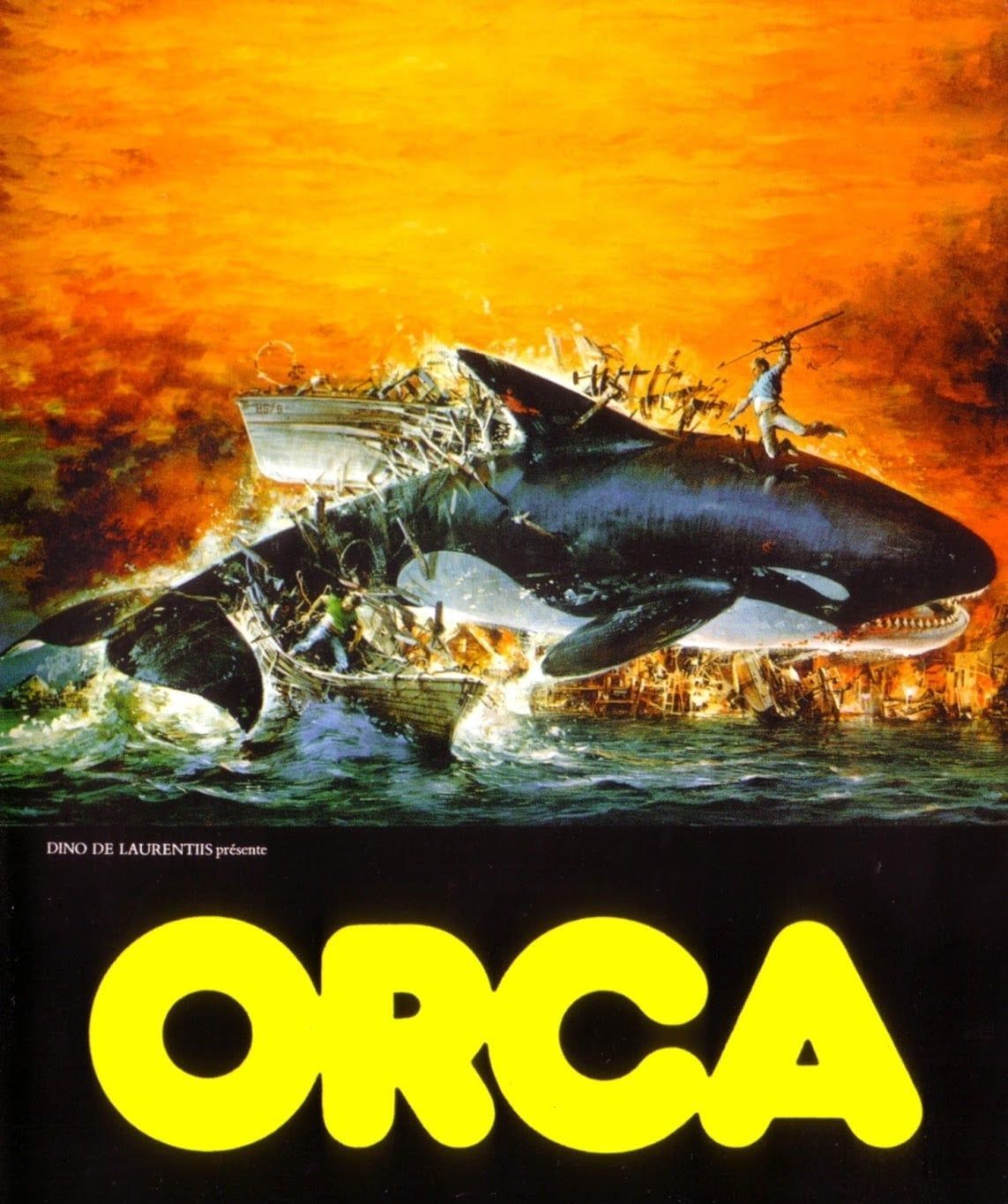
Many a film producer rushed to cash in on Steven Spielberg’s summer blockbuster Jaws with numerous rip-offs, and renowned Italian movie director Dino De Laurentiis wasn’t about to miss out on this booming subgenre, so he asked his producer friend Luciano Vincenzoni to “find a fish trickier and much more fearsome than the great white.” As a consequence of this effort, the film Orca, about an angry killer whale, was born.
After witnessing Captain Nolan’s death of his mate and children, a furious killer whale goes mad in a fishing town in Newfoundland. Nolan, Rachel, and Umilak sail after the giant beast, who will confront them on its own grounds, under the influence of the villagers.
The picture looks to be both pleasant and erroneous at points. Some of the ocean and coastal town videography is good, but it’s mixed in with stock video and whale film from California’s Marineland of the Pacific and Marine World Africa (Yaka and Nepo). It appears to be a bleak and desolate environment.
It’s evident right away that “Orca’s” editing isn’t quite up to the standards of Jaws. The introduction and details of the killer whales and their poachers are well-done, and the commentary is completely unnecessary and well-fitting. The characters’ motivations are eye-opening and engrossing, and there are opportunities for actual relationships throughout the movie.
The orca satisfies the authors’ wish for a sharper “enemy” than a great white shark. The whale has a high level of intelligence (it can pop gas lines, start fires, and knows real estate around the small town by knowing what ships to sink and houses to tear down to get the town to eject Nolan).
Orca isn’t a fantastic picture by any standards, but it is still a classic of this sub-genre that deserves a watch. Surprisingly, the climax depicts a battle on an iceberg with the monster which is a sight to behold. One of the most memorable aspects of “Orca” is its background score, which fills in the pauses in the action with videos of leaping and breaching whales. All in all, don’t have high expectations but know that you will definitely enjoy this flick and relish its beauty and creativity as is seen.
